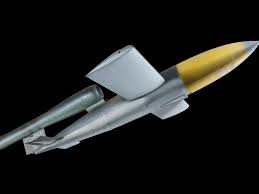Keir Giles
Russia’s war on Ukraine will soon enter another winter. And as surely as the seasons roll around, the debates over US provision of military aid to Ukraine are following their own familiar and predictable cycle. Supplies of HIMARS rocket artillery, Patriot air defence systems, Abrams tanks, cluster munitions and F-16 fighter jets to Kyiv have all followed the same pattern: initial refusal by Washington, followed by resistance to months of lobbying by Ukrainian officials supported by public opinion across the West, eventual hints of a change of view and finally confirmation that Ukraine will receive the weapons.
The latest equipment on the table is the long-range Army Tactical Missile Systems (also known as ATACMS) – currently at the ‘hints’ stage despite long being recognised as a critical enabler for Ukraine’s efforts to evict its Russian invaders.
As with each iteration of this cycle, emotions are running high among Ukraine’s supporters. Nobody can say with certainty that giving Ukraine all it asked for in 2023 would have enabled its armed forces to evict the Russian invaders by now. But what is certain is that delay and hesitancy has cost lives – not least by extending the time Russia had to build its layers of mined and fortified defensive lines. But while campaigns for Ukraine to be granted whatever high-profile weapon system is top of its shopping list at the time have been an essential component of maintaining public support, they have also distracted from the flows of less glamorous and more mundane materiel that have been constant throughout the war – such as munitions, clothing, vehicles and medical supplies.
Focusing on a single capability at a time has risked elevating it to the status of a “wonder weapon” that will win the war independently, as opposed to an integrated part of a long-term and evolving building of capability. The paradox is that the US has been by far the greatest provider of military support to Ukraine by volume, but also receives the most criticism for not giving Ukraine what it needs precisely because it has the most to give.
The public criticism centers around the US’s perceived excessive concern over triggering Russian ‘escalation.’ US officials point out that technical aspects like logistics, training, support, infrastructure and delivery all impose real delays on provision of new capabilities to Ukraine. And they’re right – but the biggest delay has consistently been the political hold before that process even starts. Once the political brakes are off, coalition partners have shown willingness to move fast even on immensely ambitious projects like the provision of F-16 fighter jets. The UK, in particular, has consistently led the drive to give Ukraine what it asks for, as well as disregarding US concerns about what Ukraine can strike with what it is given.
Meanwhile, though, the language of ‘Russian red lines’ still seems to drive US policy. There’s an extraordinarily tenacious idea among some Western policymakers that the US has no leverage, initiative or agency and instead can only be a party to this confrontation on Russia’s terms. It’s led to persistent suggestions that the US is reluctant to enable convincing Ukrainian victory because of a tacit or explicit agreement not to defeat Russia. And disagreements over Ukraine within the US system have been reflected not just in policy contradictions, but in a whispering campaign of anonymous briefings to US media, casting doubt both on Ukraine’s conduct of the war and its ability to win it.
The net result is the US leads a coalition of the unwilling among Ukraine’s supporters, where Germany has repeatedly pointed to America in an effort to justify its own reluctance to supply arms, or in the case of Leopard tanks, even holding back others from doing so. But as the war grinds towards its third year, there’s a strong argument that restraint has been a self-defeating strategy. It’s not only that the emphasis on avoiding escalation reassures Russia that it can continue to pummel Ukraine’s economy and murder its civilians through drone and missile strikes with impunity.
Anything that draws out the conflict – such as decisions on support for Ukraine that were driven by caution on what to supply – play to many of Russia’s advantages and the West’s weaknesses. And as the fighting drags on into 2024 and potentially beyond, Western backers will find it ever harder to provide what Ukraine needs. The US’s generous support for Ukraine is under threat from political trends there even before a potential change of presidency.
So with Ukrainian President Volodymyr Zelensky in the US this week to appeal for international support once again, it’s not only wavering members of the UN he is addressing. He knows there’s a risk that the window may eventually start to close on backing from Washington itself.
And even without considering the tolerance of voters for the economic cost, failure to restart European defence industries in earnest means searching ever harder and wider around the world for the munitions and weapons that are essential for Ukraine to survive.
For example in the UK, eager support is constrained by 30 years of defence cuts that have left the cupboard bare. Critical deficiencies in munitions stocks were identified well before 2022, supplying howitzers to Ukraine necessitated an emergency purchase of replacements from Sweden, and there are strong indications that the UK’s tiny donation of 14 Challenger 2 tanks represented a substantial proportion of the number of tanks the British Army had still in working order. But making Ukraine stronger is a key ingredient for Europe’s long-term security as well as for the outcome of the present war. For Russia, this is a ‘forever war’ that taps into fundamental ideas of Russian identity and for which President Vladimir Putin is willing to inflict vast economic and human losses on his country.
Even evicting every last Russian soldier from occupied eastern Ukraine and Crimea won’t end the war while Russia still has artillery, missiles and drones to launch destructive attacks while rebuilding its land forces for the next offensive. Most Western leaders have done an exceptionally poor job of explaining to their electorates that that means huge reinvestment in defence and the industries supporting it is vital and overdue. As the US becomes increasingly focused on China, the defence of Europe will increasingly rely on those front-line states that understand the threat and are willing to take it seriously.
After decades when it could pretend to itself that military threats were a thing of the past, the rest of Europe needs urgently to realise that the cost of defence is not an optional luxury. Instead, it is the price that must be paid for sharing a continent with Russia.
CNN







